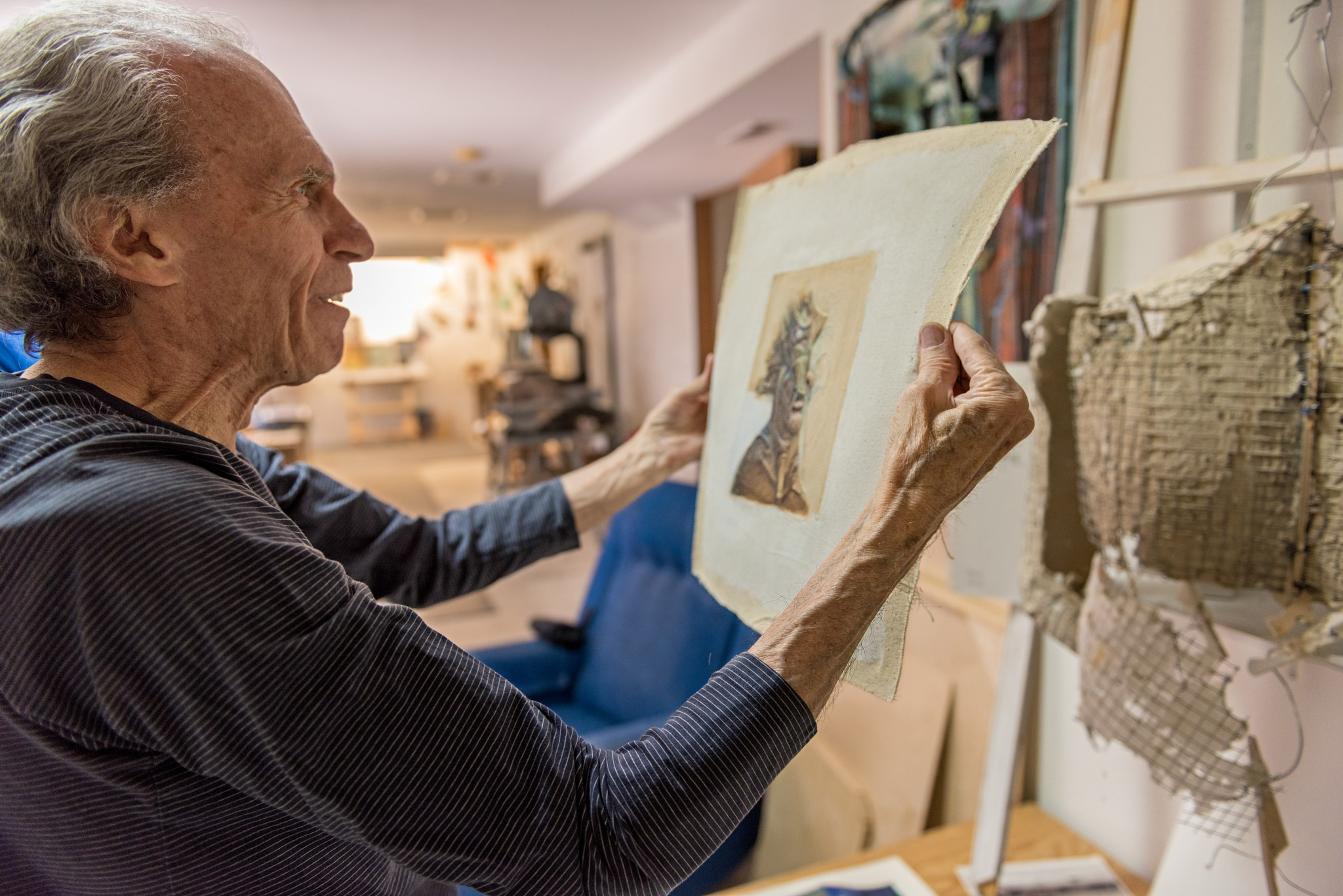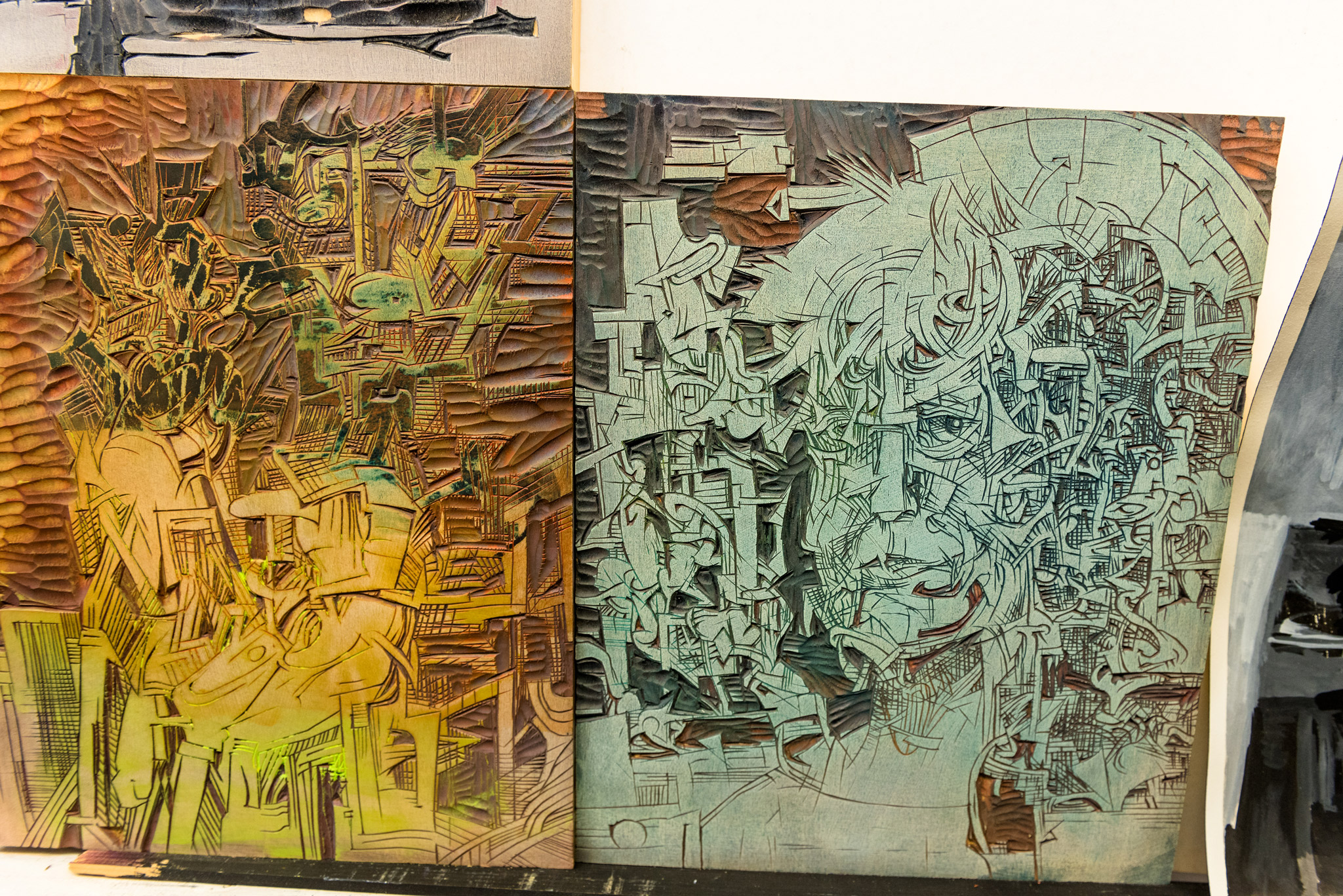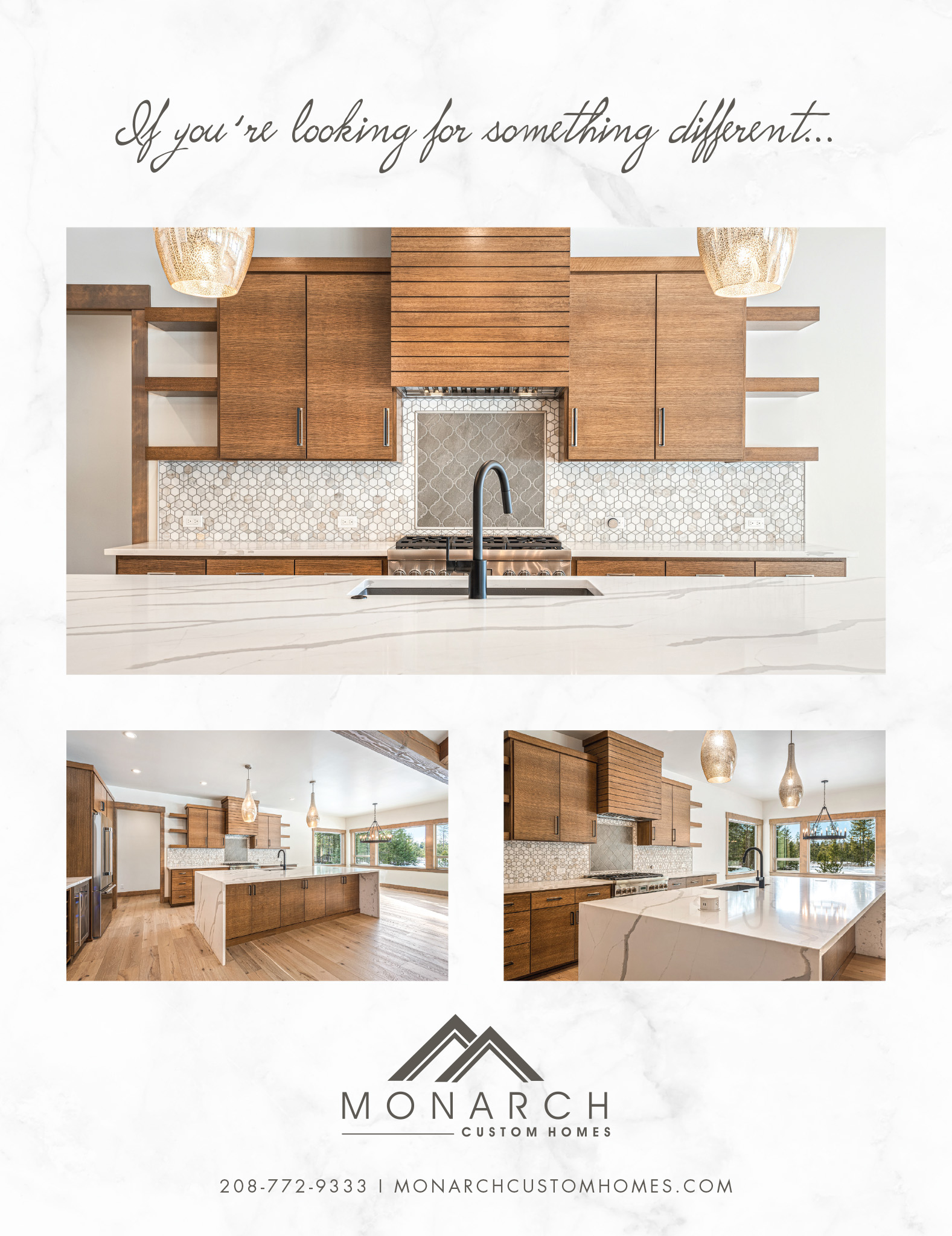He greets me at the door in Robert Grimes fashion. “Hey, man,” he shouts as I approach the door. A big, sincere grin brightens his entire countenance. “Joel!” he continues as photographer Joel Riner joins me on the porch. “Great to be working with you again, man. It’s been a long time.” Robert goes on about how “cool” this is going to be, and how we’re going to help “put [him]on the map.” It’s clear that he feels humbled by our being there, but, really, it’s me that feels humbled. Robert Grimes is an incredible artist, and no spring chicken. I wasn’t sure he’d be up for our visiting him for a story, and I’m sure to express my gratitude throughout our visit.
Stepping into Grimes’ home is like stepping into a gallery showroom. There’s art at every turn. No matter what direction I face, I find myself admiring some piece of art, whether it’s a Grimes, a McCudden or some other artist I am unfamiliar with – art on every wall – and then he takes us down to his studio.
Grimes did not always reside in Spokane. Born and raised in Cripple Creek, Colo., he grew up wandering the old buildings and machinery left over from the gold mining days. I ask if these buildings and structures influenced his art. “I don’t know,” he says, quite frankly. Then, explains. “I began drawing at 4 or 5 years old.” After 10 years in Cripple Creek, his mother demanded they move to the city so Robert could attend a “good school.” They moved to Colorado Springs.
IF YOU DON’T TAKE CHANCES, YOU MIGHT NOT BE A GOOD ARTIST.

He was a gymnast in high school, and captain of his team. “I always got A’s,” he says. His coach was sure to get him an athletic scholarship to Denver University, where he studied art. Grimes says at that time he was greatly influenced by Jackson Pollock. After college, he was a jewelry designer in Denver for 10 years. Then, in Santa Barbara for 10 years, and 10 years teaching art at a university in Virginia. “I seem to live my life in tens,” Grimes laughs. Finally, he started his own business, Radius Jewelry, in Spokane, where he continued to design his own jewelry until 1995, when Steve Gibbs convinced Robert to show his work at Steve’s gallery. “At my first show, he (Steve Gibbs) sold $100,000 worth of my work,” Grimes says. “Things looked so good, I dropped the store.” And he started calling himself a “professional artist.”
If you’ve never seen a Robert Grimes piece, it’s not because he’s not producing. It’s more likely because you’ve not been to The Art Spirit Gallery in Coeur d’Alene, Idaho. The fact is, although he lives in Spokane, Mr. Grimes only shows his art in one gallery. True to his original agreement with the late Steve Gibbs, Grimes considers it a simple matter of principle. “He always treated me good,” Grimes says. Not to mention the wonderful friendship they developed over the years.
Story continues after a quick message from our sponsor below.
We follow Grimes down the stairs and into his studio. As we step through the doorway, I instantly gain a greater understanding of what his art is all about. His walls are scattered with random images pinned or even nailed to the drywall. Some are photographs torn from magazines, others are quick original sketches and some are intricate drawings on paper that has been cut and folded, transformed into a three-dimensional piece of art. It all feels so random, so unintentional. And it is.
Robert explains they act as a source of creative inspiration. “I might use them some day,” he says, admiring them as if for the first time, seemingly because they were brought once again to his attention.
Look through a collection of Grimes, or experience a Grimes show at the gallery and you may be surprised to find everything from monotype, tempura, relief and watercolor to carvings and/or anything in between. In one corner of his studio is even a partially completed construction of wood, wire, plaster, paper and paint. “I need surprise,” Grimes explains, and that is one reason he does not categorize himself as any particular type of artist. “If you don’t take chances, you might not be a good artist,” he says, and then pauses to consider as if this is the first time he’s had to express this idea vocally. Then, as if happy with the theory, he adds, “If I thought I was doing everything right, I might choke [artistically].” Much like his life, Grimes leaves the door wide open when it comes to how he might express himself through art.

At some point in our visit I ask about the art itself. “All these shapes, the lines,” I say. “Where does this come from?”
“It’s called automatic drawing.” Grimes explains. “It’s influenced by Freud.” Then, he leads me to a bookshelf that is piled with sketch pads, each organized by date, book number and page number. Inside each book are pages of incredible automatic drawings. Like the pin-ups on his studio walls, it would appear these are also for when he “might use them.” Again his response to his own work is unique and impressive. “Wow!” he says at certain pages, and his finger reaches out to trace the lines as if with a mind of its own. In those moments Grimes is no longer with me. So, I wait for him, wondering if there is anything I am so passionate about. He laughs when he realizes how many books and sketches he has. He takes the time to look at the dates on several. “I have drawn my way through life,” he says with another chuckle.
While Joel works with Grimes on some shots, I stop to admire a watercolor in his studio. It’s unframed and pinned to the wall in true Robert Grimes fashion. It cannot be described in clarity. I do not know what it is, only that it evokes a certain level of curiosity, bewilderment and intellectual bliss and I could go back to it again and again, and never be disappointed. It’s not about clarity. It’s about shapes, images, textures, color and movement. It’s about surprise and being unintentional. Automatic. I stand and ponder over the painting, experiencing the mere feeling of the piece. Discovering a new line I hadn’t seen at first. A new shape is brought to my attention, and with it comes a new opinion. And that, I believe, is what Robert Grimes would like to hear. That, I realize, is how he experiences his own work. N
By Toby Reynolds
Photography By Joel Riner
As Featured In: Winter/Spring 2018 SPO Edition



